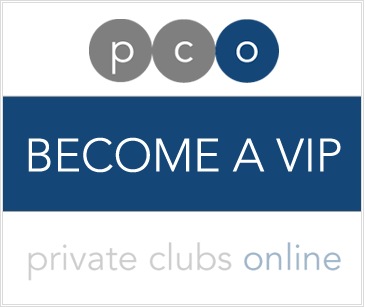The “I don’t have time for social media” Excuse
How many of you have ever said, “I don’t have time for social media?”
I know I hear it from potential clients, and even from team members of current clients.
So in this week’s video, I explain why social media is not a time hog, nor a waste of time. What is heard when you say that you don’t have time for social media is, ““I don’t have time to directly connect and communicate with my audience.” I don’t think that’s true, so we should understand that with proper planning, you can make your communication work for you and help you achieve your goals.
If you prefer to read through what I’ve discussed in the video, then you’re in for a treat. Here’s the full post:
For years and years, we have had the same sales, marketing and communication tools to work with. Now with social media, we’ve added these dynamic tools to the toolbox to help us do our jobs better, and we push them aside and label them a waste of time. The thing is, if we keep using the same old tools we’ve been using forever and ever, we will continue to produce the same results.
Your audience is online. And they are using social media. They use social media to gather news and information, to share information and discuss, and to learn more about and connect with people and organizations they care about. They are online waiting to connect with YOU.
Put in simple terms, social media are communication tools. Social media are simply communication tools designed to help you communicate directly with a specific audience. That’s it. Social media is not some big mystery or time hog. Social media is not out to get you or make your job more difficult or add extra work to your already big load of tasks.
So let’s take a step back and understand that when we say “I don’t have time for social media,” we are really saying is,
“I don’t have time to connect and communicate with my members.”
“I don’t have time to connect and communicate with my potential members.”
“I don’t have time to connect and communicate with the parents.”
“I don’t have time to connect and communicate with alumni.”
“I don’t have time to connect and communicate with donors.”
“I don’t have time to connect and communicate with future students and student-athletes.”
“I don’t have time to connect and communicate with corporate sponsors and media.”
“I don’t have time to directly connect and communicate with my audience.”
Is that true? Would you ever say that? Probably not. I sure hope that’s not the case. How can we get over this sense that we don’t have time for social media, then?
We have to change our approach to why we use social media and how we label it. We need to appreciate that this is the preferred form of communication for the majority of our audience and that social media presents a HUGE opportunity for our organizations to connect directly with our members and community. It’s a crazy effective tool that will allow us new, improved results. Here’s what we need to do to change our approach:
1. You must set clear and specific goals which allow your communication to work for you. Maybe you want to encourage current Members to sponsor one new Member this month, perhaps you desire 250 more people at the soccer game. You might set a goal of growing your alumni reunion attendance by 7% this year. Or you may set a goal to recruit 5 new graduate students from San Diego. Your organization has lots of goals. Each department has specific goals. And the individuals in your organizations have goals to fulfill as well. Communication can serve to achieve those goals.
How can communication serve those goals?
2. This is done through a content plan. Setting up a content plan is really not that difficult. It organizes your communication so that everyone on your team understands that on this date, X message will be posted to Y channel. A content plan will help you organize your daily, weekly and monthly communication to your audience. It will also help you keep track of what you’ve said in the past, so that you stay on point and remain consistent. A content plan will save you time.This is key, because without a specific plan of action, you can and will get lost within your social channels because you are not fulfilling a task. You’ll find yourself aimlessly searching through your news feed, because you didn’t have a clear purpose for logging on to the network in the first place. Coupling a content plan with a social media management tool like Hootsuite or Buffer, where you can schedule messages in advance will eliminate distractions and help you stay on track.
What else can a content plan do?
3. A content plan can also help distribute responsibility for posting to social media. For example, a Private Club has several voices the Members should be hearing from. Chef, Food & Beverage, The Golf Pro, Membership, Private Events and Member Relations all make up the collective voice of the Club. However, if all of the Club’s communication is initiated from Member Relations, that is the voice the Members will hear. Your members miss out on the opportunity to learn how to sponsor a new member, what private event packages are on offer or what’s the best advice to improve a golf swing. Everyone needs to and should want to contribute to the content plan so that everyone has an opportunity to achieve their department goals, and directly connect and communicate with their audience.
Therefore, your content plan should include notes to the tune of that on this day, at that time, on X channel, so-and-so will post Y message.
Let’s change what we label social media…
4. Just as you make time in your daily schedule for meetings, sales calls, responding to e-mails and events, so you should make time for social media. But instead of putting “social media” on your calendar which is vauge and without purpose, be specific. “Reply to Twitter messages.” “Post the sponsorship details of the ABC event and include weblink.” “Invite the ‘new biz cards’ pile to connect on LinkedIn.” This makes for a specific task with a specific purpose, designed to help you achieve specific goals.
Social media provides us a tremendous opportunity to creatively, quickly and directly connect and communicate with our audience. We really need to make that mental flip and value the opportunity that social media provides us. We need to approach these tools with the attitude, “This is my goal, this is my message, and this is how I’m going to deliver that message to my audience.” Otherwise, we will keep doing the same thing, using the same methods, and achieving the same results. That to me seems like the waste of time.
Comments are closed





